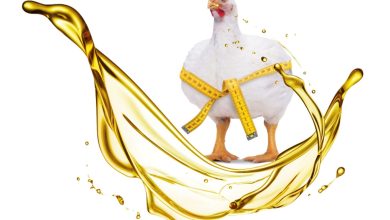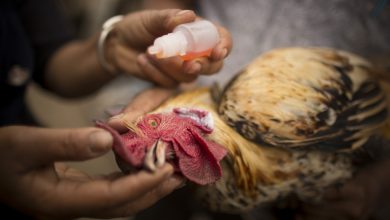UNDERSTANDING FOWL POX : A DERMATOLOGICAL MENACE IN POULTRY

Renu Chauhan1 and Amandeep Singh2
1.Veterinary Officer, VH Dadahu, Department of Animal Husbandry, Government of Himachal Pradesh (173022).
2.Assistant Professor, Directorate of Extension Education, Guru Angad Dev Veterinary & Animal Sciences University, Ludhiana, Punjab (141004).
Introduction
During past many years there has been increase in poultry rearing by farmers whether it is backyard poultry farming or commercial poultry farms. Poultry rearing provides rapid returns and more profit with lesser inputs. Disease are the inevitable part of poultry farming but can be prevented in the flocks. Several diseases which are easily vaccinated against, need to be considered in their health management programs. One such disease is fowl pox.
About the disease
Fowl pox is a slow-spreading viral infection of chickens and turkeys characterized by proliferative lesions in the skin that progress to thick scabs (cutaneous form) and by lesions in the upper gastro-intestinal and respiratory tracts (diphtheritic form). Virulent strains of this virus may cause lesions in the internal organs (systemic form). Fowl pox is seen worldwide, in India, fowl pox infection has been regarded as a re-emerging disease by various workers.
Transmission
Fowl pox virus is present in large numbers in the lesions and is usually transmitted by contact through abrasions of the skin. Skin lesions (scabs) shed from recovering birds in poultry houses can become a source of aerosol infection. Mosquitoes and other biting insects may serve as mechanical vectors. Transmission within a susceptible flock is rapid when mosquitoes are plentiful because mosquitoes play here a role of vector. The incubation period is from 4 to 10 days. The disease spreads slowly and many weeks could pass between its emergence and severe outbreaks occurrence. The disease tends to persist for extended periods in multiple-age poultry complexes because of slow spread of the virus and availability of susceptible birds.
Clinical signs
The cutaneous form of fowl pox is characterized by nodular lesions on various parts of skin of chickens which is without feather and on the head and upper neck of turkeys. Lesions may be seen on skin under feather. Primarily lesions are on legs and feet. The lesion is initially a raised, blanched, nodular area that enlarges, becomes yellowish, and progresses to a thick, dark scab. Multiple lesions usually develop and often coalesce. Lesions in various stages of development may be found on the same bird. Localization around the nostrils may cause nasal discharge. Cutaneous lesions on the eyelids may cause complete closure of one or both eyes. Only a few birds develop cutaneous lesions at one time. Lesions are prominent in some birds and may significantly decrease flock performance.
Often, the course of the disease in a flock is protracted. Extensive infection in a layer flock results in decreased egg production. Cutaneous infections alone ordinarily cause low or moderate mortality and these flocks generally return to normal production after recovery. Mortality is usually high in diphtheritic or systemic infections.
Diagnosis
Pox is readily diagnosed by a veterinarian based on flock history, presence of typical lesions and post mortem. When small cutaneous lesions are present it is very difficult to differentiate from abrasions caused by fighting.
Molecular techniques such as PCR can be used to detect virus DNA. There are many other techniques such as microscopic examination of stained tissue sections, nucleic acid probe, monoclonal antibodies against virus antigen and virus isolation from SPF flock. There aforementioned techniques help clinician to get accurate diagnosis.
Prevention and control
There is no treatment for fowl pox. Control and prevention in chickens is accomplished by vaccination by the wing web method with a commercially available fowl pox or pigeon pox vaccine. This should be administered to all chickens at 12-16 weeks of age. Vaccinated birds should be examined for takes about seven to ten days following inoculation. A take consists of swelling of the skin or a scab at the site where the vaccine was applied, this is to be examined after 1 week of vaccine administration. Because the infection spreads slowly, vaccination is often useful to limit spread in affected flocks if administered when less than 20 percent of the birds have lesions.
A high percentage of chickens showing reaction (takes) indicates a satisfactory vaccination. The absence of a take could be the result of vaccine being administered improperly, use of a vaccine with inadequate potency (improperly stored or used after expiration date), or vaccine being applied to an immune bird.
Precautions should be taken when administering the pox vaccine as it is a live type of virus vaccine. Because the pox vaccine produces a mild form of the disease, only healthy birds should be vaccinated. It is strongly recommended that all chickens in a house be vaccinated on the same day. The vaccine must be applied only to the vaccination site, and precautions taken to prevent contamination of other parts of the chicken, the premises and the equipment. Mosquito control should also be part of the preventive program.
These simple precautions will provide protection to your chickens, and allow you to enjoy and raise your flock free of this disease.




